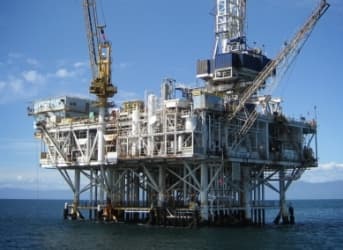Two hundred and twenty-two years after Josiah G. Pierson patented the rivet machine, and the oil market remains as riveting as ever. (I’m here all week, folks). After yesterday’s API report gave a flourishing hat-tip towards a large build to crude stocks and a large draw to gasoline, oil is sliding amid a stronger dollar, while gasoline is pushing higher. Here are some things to consider today:
Jumping straight into economic data, the most insights we’ve had overnight have come from Brazil. Its mid-month inflation print dropped into single digits (at +9.95 percent), but still close to a 12-year high. Meanwhile, its unemployment rate jumped to 8.2 percent, its highest level in nearly 7 years.
Economic weakness in Brazil is strongly tied to the performance of the underlying resources it is rich in. Hence, as the price of key commodities for the South American country – such as soybeans, iron ore and crude – have headed south, so has its economy. As the chart below illustrates, the fate of the state-run oil company Petrobras tracks closely with oil prices. Hence as oil prices have charged lower, it is no surprise to hear this week that Petrobras has reported its biggest ever quarterly loss of $10 billion in Q4 of 2015, due to asset write-downs amid falling oil prices. Related: Oil Prices Struggle To Move Beyond $40
(Click to enlarge)
We have U.S. weekly inventories on deck this morning, with last night’s humongous API crude build of 8.8 million barrels adjusting expectations ahead of today’s number. The API report also yielded a large 4.3 million barrel draw to gasoline stocks, pointing to a drop in refinery utilization (read: refinery maintenance) amid destocking from the winter to the summer blend. As we mentioned yesterday, our ClipperData showed strong crude imports last week amid a wealth of waterborne arrivals into the U.S. Gulf, tipping us off to a crude build.
The chart below is a pretty nifty summary of the recent history of global refining capacity. While global oil demand has increased by ~10 million barrels per day over the last decade, demand for refined products has only risen by about half that. Over the same time period, refining capacity has increased by 8.7 million bpd. Related: The Current Oil Price Rally Is Reaching Its Limits
This year is set to see a temporary respite, as capacity additions are expected to be just 500,000 bpd, while demand for refined products is set to rise by 900,000 bpd.
The theme of overcapacity is set to return over the next half-decade, with potentially an additional 7.7 million bpd of refining capacity set to come to market, with most of this in Asia and the Middle East. All the while, demand is expected to only increase by 5.9 million bpd. On this basis, excess refining capacity could rise to 5.3 million bpd.
While the oil glut may be recalibrated in the coming years, an impending glut in refined products may not:
(Click to enlarge) Related: What Happens When Oil Hits $50?
Finally, there have been a couple of interesting bits of rhetoric out of the IEA. We discussed yesterday how the slashing of capex by the oil and gas industry means that new production coming to market is not going to be enough to offset the decline rate from current output.
This fear is affirmed today by the head of the IEA’s Oil Industry and Markets Division, Neil Atkinson, who said that ~$300 billion is needed to sustain the current level of production – ‘We need a lot of investments just to stand still…if investment doesn’t resume in 2017 and 2018, we can see a spike in oil prices as oil supply can’t meet demand‘.
The IEA is terming this a ‘hinge point’ in the market: demand is set to surpass available supply in the coming years, and inventories will be drawn down to make up for the missing barrels.
By Matt Smith
More Top Reads From Oilprice.com:
- Record Loss For Petrobras As Political And Economic Crisis Worsen
- Brussel’s Terror Attack Drives Europe Further Into Terrorism Rabbit Hole
- New Biofuels Alternative Could Upend Oil Markets





















Oil so 19 th century!